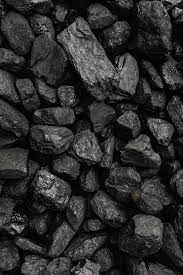
How do you test carbon black?
2023-09-11
In the field of environmental monitoring and quality control, technologies and methods for testing carbon black are critical for accurate analysis and quality control. This article will explore different carbon black testing technologies and methods to help you better understand how to test carbon black and its importance in environmental applications.
Test purpose and background
Carbon black is a black pigment composed of carbon particles and is commonly used in industrial products such as rubber, plastics, and inks. However, carbon black can have negative effects on the environment and human health, so carbon black needs to be tested and analyzed to ensure product quality and environmental safety.
Basic physical property testing
Testing the basic physical properties of carbon black can include the following aspects:
Surface area test: Measure the surface area of carbon black through specific surface area testing methods (such as nitrogen specific method) to evaluate its adsorption capacity and reactivity.
Particle size analysis: Use laser particle size analyzer and other equipment to test the size distribution of carbon black particles to understand its particle characteristics and dispersion.
Density determination: Testing the density of carbon black can be carried out by float density meter and other equipment.
Chemical composition analysis Testing the chemical composition of carbon black can help understand its components and contaminant content. Commonly used methods are:
Elemental analysis: Determine the content of various elements (such as carbon, oxygen, nitrogen, sulfur, etc.) in carbon black through ICP-OES, ICP-MS and other instruments.
Volatile content test: Use equipment such as a thermogravimetric analyzer (TGA) to measure the volatile content in carbon black samples to evaluate its thermal stability and volatility.
Organic pollutant testing: Gas chromatography-mass spectrometry (GC-MS) is used to conduct qualitative and quantitative analysis of organic pollutants in carbon black.
Characterization Techniques In addition to basic physical properties and chemical composition analysis, the following characterization techniques can be used to test and evaluate the properties of carbon black samples:
Infrared spectroscopy: Detect functional groups and structural characteristics in carbon black through infrared absorption spectrum analyzer (FTIR).
Thermogravimetric-differential thermal analysis: Use a thermogravimetric-differential thermal analyzer (TGA-DTA) to determine the thermal decomposition characteristics and thermal stability of carbon black.
X-ray diffraction: Use X-ray diffractometer (XRD) to analyze the crystallinity and crystal structure of carbon black.
Quality Control and Standards In order to ensure the accuracy and comparability of test results, a quality control system needs to be established and tested with reference to relevant standard methods. For example, in the carbon black industry, standards such as ASTM D1765 and ISO 11277 provide detailed testing guidelines and specifications.
In environmental applications, the technology and methods for testing carbon black are an important part of ensuring product quality and environmental safety. Through comprehensive testing and analysis of the basic physical properties, chemical composition, and characterization characteristics of carbon black, its performance and environmental impact can be effectively evaluated. During the testing process, establishing scientific quality control measures and following relevant testing standards can ensure the accuracy and reliability of test results, thereby providing strong support for environmental protection and product development.
If you want to use high-quality carbon black, please contact us to get it! !
Previous page:Application of carbon black in battery materials

